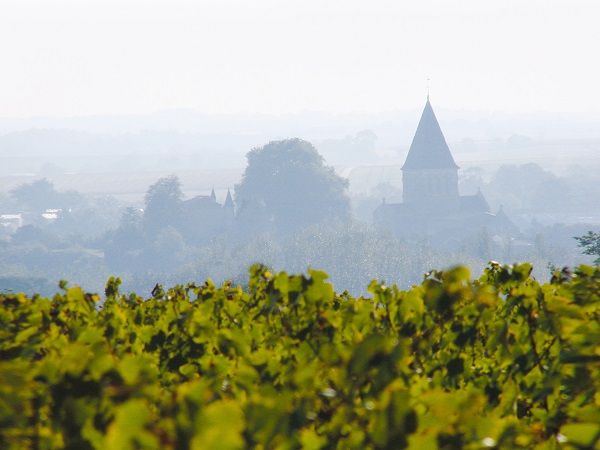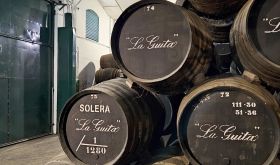From €9.35, £10.95, $14
The Vendée is not a wine region that bounces with easy familiarity off most people’s lips. It’s a fragmented little region that seems to have fallen off the bottom of Pays Nantais, and it clings to the edge of the Atlantic Ocean, ducking under salty winds and being disdainfully ignored by Cognac and then Bordeaux to the south.
The climate is maritime; winters cold and wet, springs cool and cloudy, summers sunny, warm and humid. The land lies flat and wide. This is salt-marsh country, where for centuries men literally scraped a living from the fleur de sel, the local salt. And this is where you pop down to the fish market early to get the catch brought in each morning straight off the local fishermen's boats: sea bass, brown shrimp, mullet, crab, mussels and sardines.
There are just 412 ha (1,018 acres) of AOC vineyard across five communes, each of which is allowed to append its name to the Fiefs Vendéens appellation (on the far left of this map of the Loire Valley from the World Atlas of Wine). Slightly more rosé is made than red (45% to 38%) with just a little bit of white wine, which is mostly made in the northern-most commune of Brem, its vineyards sitting with their toes almost in the Atlantic.
Move 30 km (19 m) inland and a little south you come to the largest commune, Mareuil. Here, on very gentle slopes of rhyolite and schist, rolling down to the Lay and Yon rivers, grow Gamay, Pinot Noir, Cabernet Franc, Négrette, Cabernet Sauvignon, Chenin Blanc and Chardonnay.

The Mourat family were salt makers on the Ile de Ré until the end of the 19th century, when they became wine merchants in Sables d’Olonne. They sold wine for three generations, then in 1974 Jean Mourat bought land in Mareuil and planted the vineyard which would become Château Marie du Fou. In 1998, his son Jérémie (pictured above on the right-hand barrel) joined him and took over the running of the estate in 2000. In 2006 he expanded the domaine to include the vineyard Le Clos Saint André (pictured above), and in 2011 acquired Le Moulin Blanc, where they have restored a magnificent white windmill. In the past 10 years they have gradually been converting all their 122 ha (300 acres) of vineyards to organic production.

Jérémie is a modern, experimental winemaker who plays with concrete eggs, makes a white Pinot Noir, and in 2013 built a gleaming, linear, minimalist winery and tasting room. He has also teamed up with Jérémie Huchet (on the left barrel in the top picture), AOC Muscadet, to make a range of wines they call Les Bêtes Curieuses.

Today’s wine, however, is neither made in eggs nor a blanc de noir. It’s a simple IGP Val de Loire from his entry-level Collection range. It’s just 12.5%, piercingly fresh, and is a blend of Pinot Noir, Cabernet Franc, Négrette, Cabernet Sauvignon from vines between 15 and 30 years old. 100% destemmed, fermented for eight days with regular remontage in temperature-controlled tanks, and five months on lees in tank.

It comes in an oddly squat flask-like bottle, but packs a juicy cherry nose with a little kick of fresh sweet oranges. The fruit is ripe, sappy and jewel-bright: redcurrant and cranberry, with a pencil-graphite slender minerality that betrays the presence of Cabernet Franc. Brisk tannins jiving with energetic fruit – it feels like a metabolism boost! The finish is neat, dry, snappy, like a gymnast finishing a perfect somersault in your mouth. And then a little line of herbs lingering on the tongue.
This is a deliciously unpretentious wine that would be pretty perfect with a tomato-based seafood stew, or veal tonnato, or, quite frankly, just simple, everyday home food. We had it with chicken and roast broccoli and it was like best friends watching a movie on the couch. It’s a pizza wine, a meatballs wine, a throw-everything-in-it salad wine.
At the time of writing there are four wine merchants selling it in the UK and it seems to be relatively easy to find in the US, according to Google and Wine-Searcher. And, although it doesn’t come up on Wine-Searcher, Les Grappes sell it in France for €9.35. You can also pick up the 2016 for €8.20 in France and for $15 in California.














